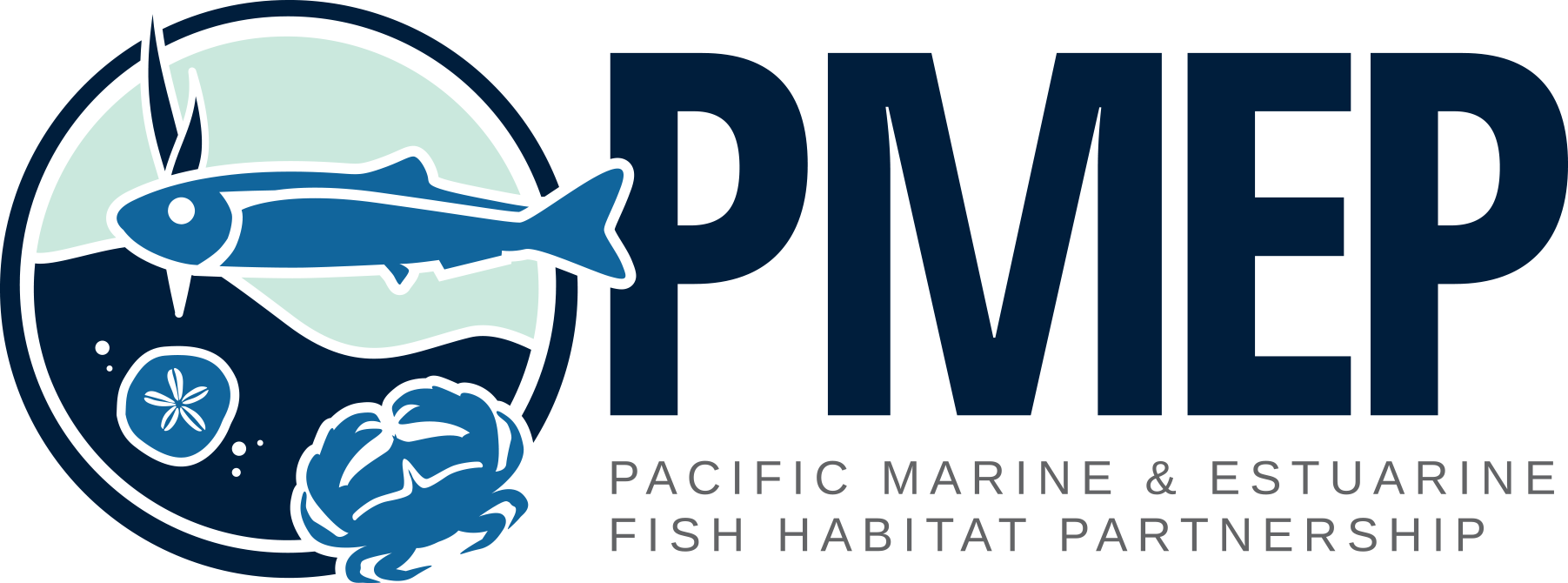Case Study 2: San Francisco Bay-Oakland Bay Bridge

Background: A restoration fund was developed to mitigate impacts (~ 3.6 acres) to eelgrass related to the San Francisco-Oakland Bay Bridge East Span Seismic Safety Project (SFOBB Project). A restoration goal of 10.8 acres was initially established and later updated to reflect the actualized impact which was less than the 3.6 acre estimate [1]. This restoration was tracked in conjunction with the Cosco Busan Damage Assessment and Restoration Plan, or DARP eelgrass restoration that was mitigation for the release of 53,000 gallons of fuel oil into the Bay.
Practitioners took an adaptive approach to planning and implementing the SFOBB restoration. First, potential restoration sites were identified using the Baywide Ecological Limits Viability and Sustainability Model, or ELVS [2], and a subset (n=3) of the sites were chosen for their historical restoration successes, and land-owner willingness to allow for restoration in the area [3]. Second, test plots were used at each of the proposed sites using multiple techniques (Kiriakopolos Bamboo-Stake Method, hereafter ‘bamboo-stake method’ and Merkel’s Paper Stick Method, hereafter ‘paper-stick method’) using donor material from a single meadow to test the efficacy of both site and technique. At a subset of test plots, buoy-deployed seeding or BuDs were also used. If, after 1-year test plots persisted and/or expanded, restoration was scaled up to ½ acre plots, and if test plots showed patterns of attrition additional test plots were installed—an adaptive measure to ensure that increased investment was not going into sites that were failing for known or unknown reasons.
The primary transplant method was the paper-stick, with bands of transplants of donor plants sourced from the three natural beds or mixed (Point San Pablo/Point Pinole, Point Molate, and Richardson Bay). On the end rows of each ½ acre, the bamboo-stake method was used sourcing transplant material from the Point Molate bed. Each row was separated by a gap for the deployment of BuDs to improve genetic diversity or allow for lateral expansion of transplants in the absence of BuDs [1]. Low expected success or bioturbation from burrowing bay ghost shrimp and foraging bat rays precluded two sites as possible candidates for BuDs. Over the course of three transplanting years (June 2014, May 2015, June 2016, July 2018, and 2019), practitioners planted 18 half-acre plots and 36 test plots. Success was measured as meeting mitigation criteria through increasing the overall cover, extent, and distribution of eelgrass at each site.
Outcomes: Prior to the SFOBB restoration, parts of the Bay experienced significant eelgrass losses (~917 acres), exacerbated by a warm water event [1]. By 2016, the SFOBB restoration had expanded to 2.8 acres but in 2017 a large freshwater event decimated restored and natural eelgrass in the Bay. The SFOBB restoration saw a 91-99% reduction in eelgrass distribution, with the most dramatic losses observed in shallow versus deep waters. One site remained unaffected by the freshwater event and was the only site that continued to expand throughout 2017. Despite the 2017 freshwater event, the SFOBB restoration plots have been increasing in cover and extent (Figure 1). As of October 2019, the spatial distribution of the SFOBB restoration reached 138,277 m2 or 34.17 acres [1].
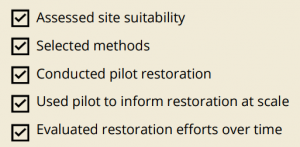
Contact(s) for Project: Dr. Katharyn Boyer; katboyer@sfsu.edu and Keith Merkel; KMerkel@merkelinc.com
References:
1. Merkel & Associates, Inc. and San Francisco State University Estuary and Ocean Center. 2020. Eelgrass (Zostera marina) Restoration and Baywide Inventory Services. Annual Report 2019 for NOAA National Marine Fisheries Service and Western Acquisition Division.
2. Merkel & Associates, Inc. 2005. Baywide Eelgrass (Zostera marina L.) Inventory in San Francisco Bay: Eelgrass Bed Characteristics and Predictive Eelgrass Model. Prepared for CalTrans and NOAA as part of the San Francisco – Oakland Bay Bridge East Span Seismic Safety Project. September 2005.
3. Boyer, K. E. and S. Wyllie‐Echeverria. 2010. Eelgrass Conservation and Restoration in San Francisco Bay: Opportunities and Constraints. Appendix 8‐1, San Francisco Bay Subtidal Habitat Goals Project Report.
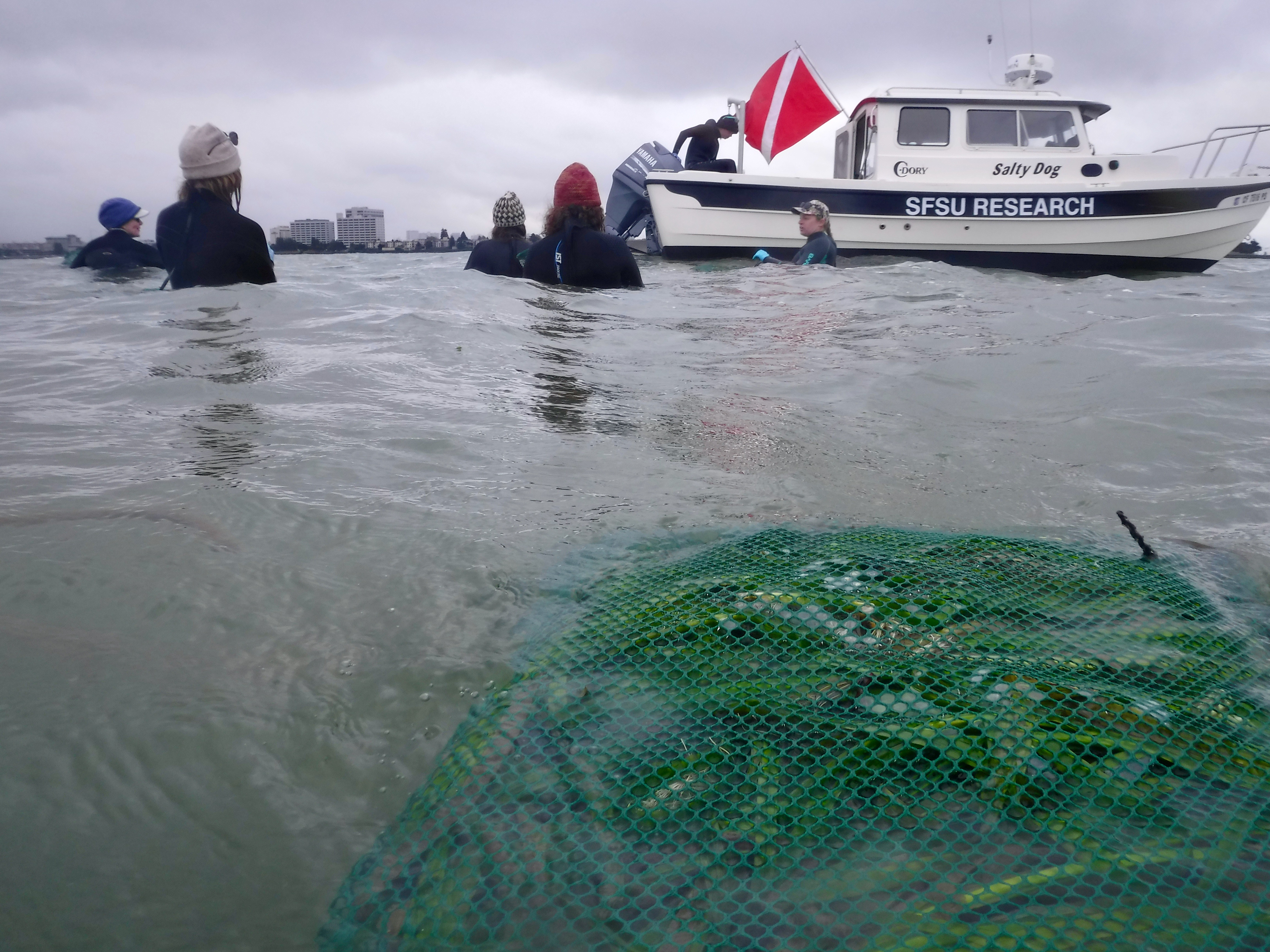
Collecting eelgrass for transplanting. Photo: Melissa Patten.
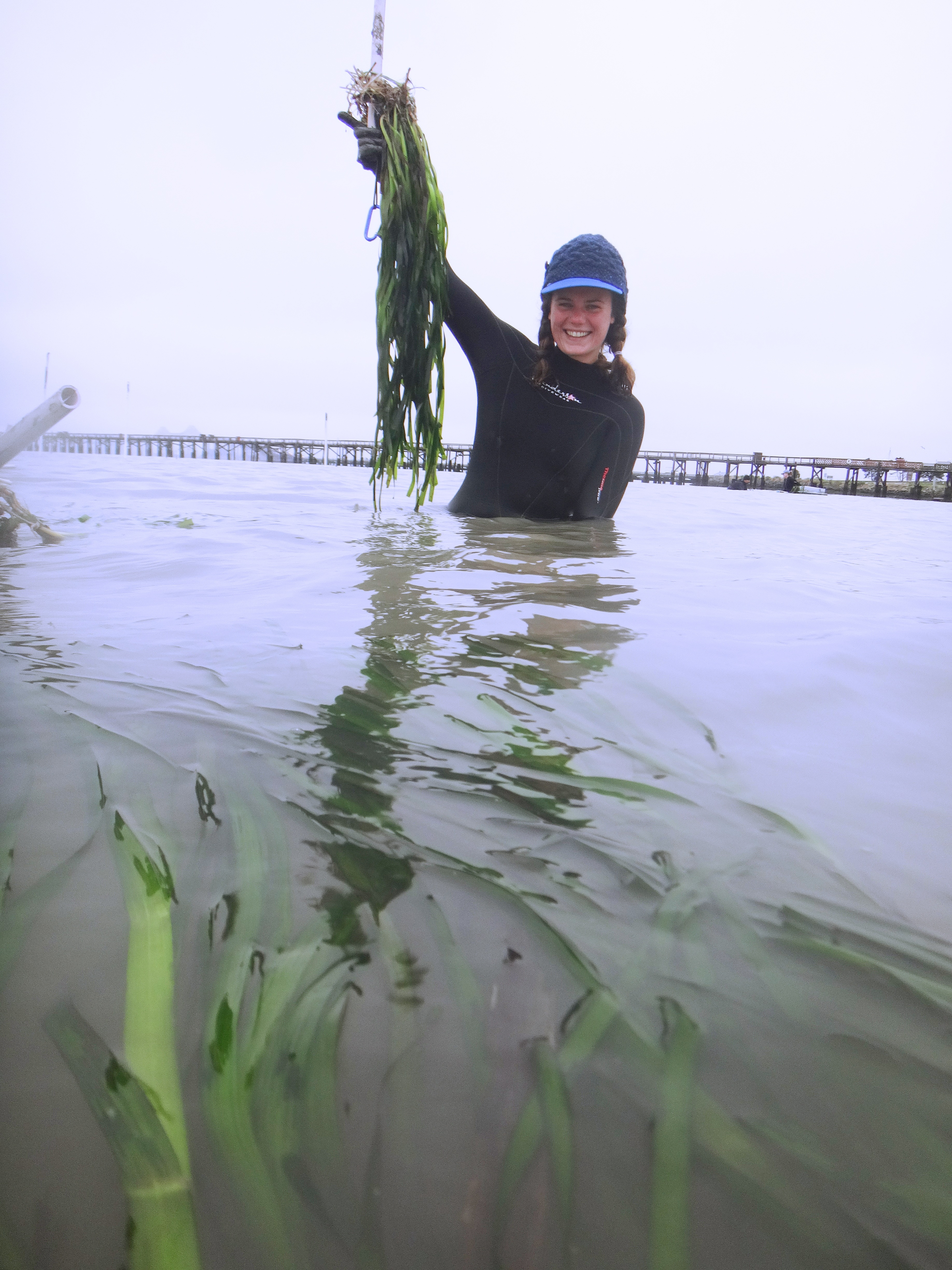
Planting eelgrass with paper stick method, Marin Rod and Gun Club. Photo: Stephanie Kiriakopolos.
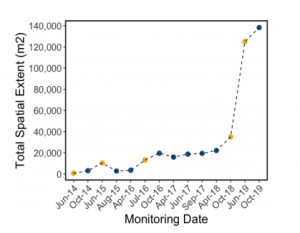
Figure 1. Total spatial extent (m^2) across all restoration sites from 2014-2018 [Modified Fig. 24. from Merkel & Associates and SFSU Estuary and Ocean Center 2020] Orange points indicate approximate season and year when transplants were added.
